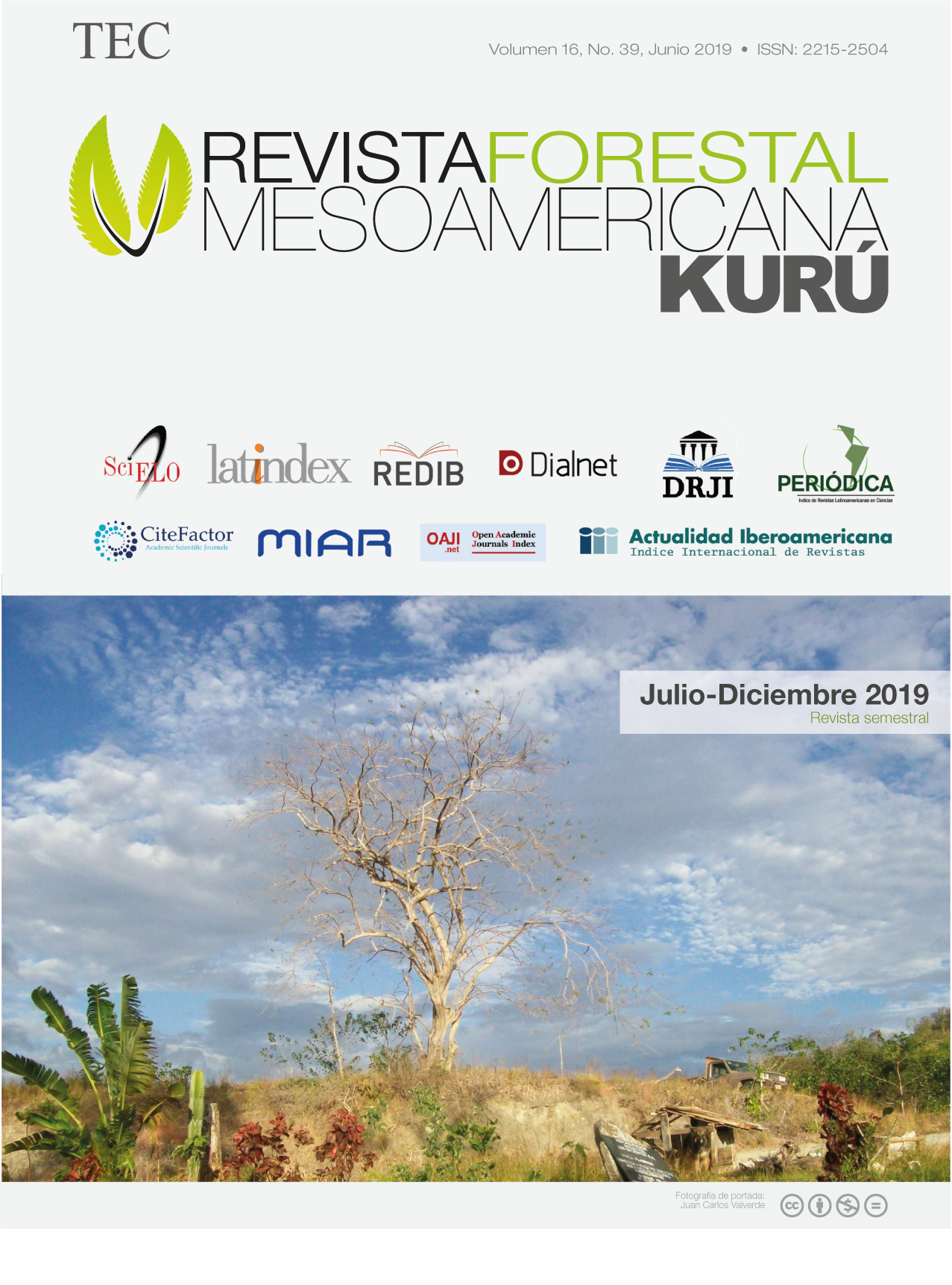Structure and composition of a secondary forest in the Ostional National Wildlife Refuge, Guanacaste, Costa Rica
Main Article Content
Abstract
During the decades of the 60’s and 70’s there was a period of forest cover loss that affected Guanacaste province, causing a degradation of the coastal forest, which is an unique ecosystem due to the species ability to adapt to abiotic conditions. The above, negatively impacted sea turtles, which have suffered an imbalance between the number of males and females, due to the increase of sand temperature associated to the loss of forest cover. This situation motivated the Ostional National Wildlife Refuge (RNVSO) to create a coastal biological corridor, for which they need to know the structure and composition of this forest in order to propose species to be used in the restoration of this degraded sites. In this study, four permanent sampling plots (PSP of 2 400 m2 were installed, where the variables diameter, scientific name, and vertical structure conditions were evaluated. A total of 353 individuals/ha were found, belonging to 36 species and 17 botanical families, with a basal area of 27,24 m2/ha. The most representative families were Malvaceae (27,58% IVI), Rubiaceae (18,38% IVI) and Anacardiaceae (12,52% IVI); while the most dominant and abundant species were Pachira quinata (45,63%), Callycophyllum candidissimum (15,11%) and Spondias mombin (12,28%). When compared with other studies, similarities in diversity and composition were found with other coastal forests of the same province, being a difference in the structure with respect to non-protected forests. The coastal forests of the RNVSMO are similar in composition and structure to the dry forests, despite being in a transition zone to the humid forest, which may be associated with the unique abiotic conditions that the species face and their level of fragmentation.
Article Details
Revista Forestal Mesoamericana Kurú is licensed under CC BY-NC-ND 4.0
Al enviar un artículo a la Revista Forestal Mesoamericana kurú (RFMK), los autores ceden los derechos patrimoniales a la editorial de la RFMK una vez su manuscrito haya sido aprobado para publicación, autorizando a la RFMK a editarlo, reproducirlo, distribuirlo, y publicarlo en formato físico y/o electrónico. La titularidad de los derechos morales sobre los trabajos objeto de esta cesión seguirá perteneciendo a los autores.

